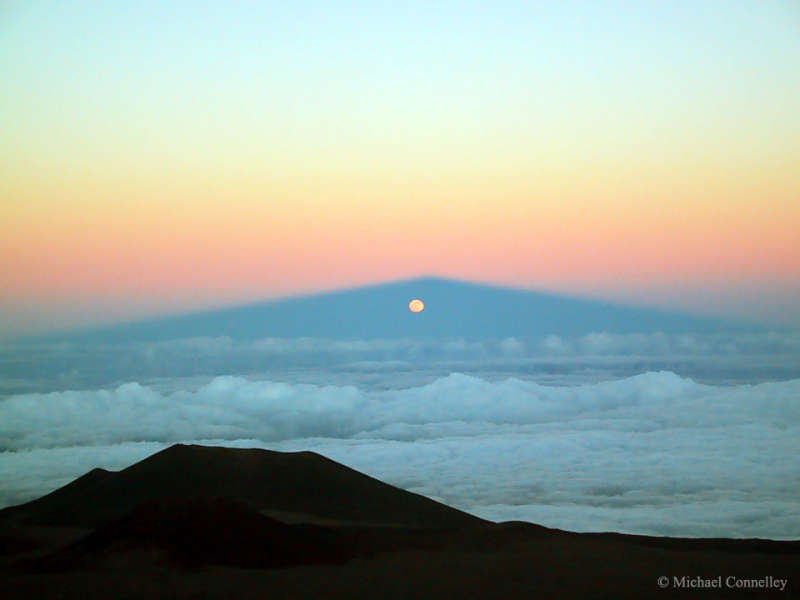Credit & Copyright: Michael Connelley
(U. Hawaii)
Explanation:
How can the Moon rise through a mountain?
It cannot -- what was
photographed here is a
moonrise through the
shadow of a large
volcano.
The volcano is Mauna Kea,
Hawai'i,
USA,
a frequent spot for
spectacular
photographs
since
it
is
one of
the
premier
observing
locations
on
planet
Earth.
The Sun has just set in the
opposite direction,
behind the camera.
Additionally, the
Moon has just passed full
phase -- were it precisely at
full phase it would rise, possibly
eclipsed, at the very peak of the shadow.
The Moon is actually rising in the
triangular
shadow cone of the volcano,
a corridor of darkness
that tapers off in the distance like
converging train tracks.
The Moon is too large and too far away to be affected
by the
shadow of the volcano.
Refraction
of moonlight through the
Earth's atmosphere makes the
Moon appear slightly oval.
Cinder cones from old volcanic eruptions are visible
in the foreground.
1999 2000 2001 2002 2003 2004 2005 2006 2007 2008 2009 2010 2011 2012 2013 2014 2015 2016 2017 2018 2019 2020 2021 2022 2023 2024 2025 |
Yanvar' Fevral' Mart Aprel' Mai Iyun' Iyul' Avgust Sentyabr' Oktyabr' Noyabr' Dekabr' |
NASA Web Site Statements, Warnings, and Disclaimers
NASA Official: Jay Norris. Specific rights apply.
A service of: LHEA at NASA / GSFC
& Michigan Tech. U.
|
Publikacii s klyuchevymi slovami:
Moon - moonrise - Mauna Kea - Luna
Publikacii so slovami: Moon - moonrise - Mauna Kea - Luna | |
Sm. takzhe:
Vse publikacii na tu zhe temu >> | |
